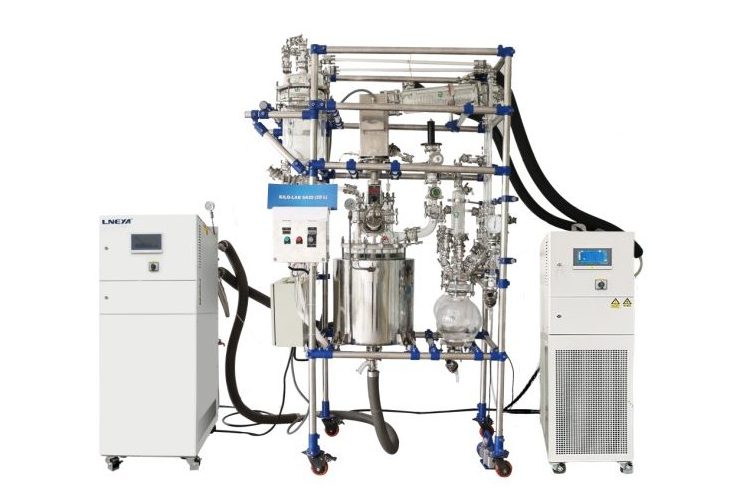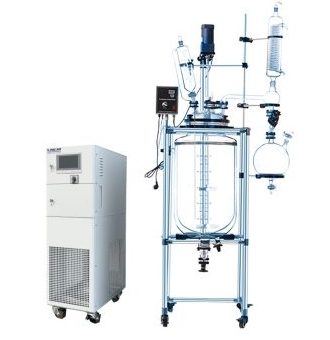Why Reactor Systems Need a Chiller

- 4 Types of Refrigeration Systems Which One Fits Your Facility
- What is a VFD chiller VFD chiller vs Non VFD chiller
- What is a Gas Chiller
- What is a Scroll Chiller
- What is a Screw Chiller
- Chiller Refrigerant Charging Tools Steps and Tips
- Chiller Low Pressure Alarm 5 Common Reasons and Solutions
- Is r22 refrigerant still available for chillers
- 2025년 8월
- 2025년 7월
- 2025년 6월
- 2025년 5월
- 2025년 3월
- 2025년 2월
- 2025년 1월
- 2024년 12월
- 2024년 11월
- 2024년 10월
- 2024년 9월
- 2024년 8월
- 2024년 7월
- 2024년 6월
- 2024년 5월
- 2024년 4월
- 2024년 3월
- 2024년 2월
- 2023년 9월
- 2023년 7월
- 2023년 6월
- 2023년 5월
- 2023년 1월
공냉식 냉각기 냉각기 냉각기 설치 냉각기 Chiller Troubleshooting 저온 조립 냉동고 냉각 냉각기 냉각 난방 순환기 냉각 난방 시스템 cooling system 이중층 유리 반응기 동적 온도 제어 시스템 냉동고 가스 냉각 냉각기 난방 순환기 산업용 냉각기 산업용 냉각 산업용 냉동고 산업용 냉장고 재킷 리액터 액체 냉각 냉각기 저온 냉각기 뉴스 제약 냉각기 공정 냉각기 원자로 냉각기 원자로 냉각 원자로 냉각 가열 원자로 가열 냉각 리액터 시스템 냉장 서큘레이터 냉장 냉각기 스크류 냉각기 반도체 냉각기 반도체 테스트 냉각기 sundi tcu 온도 제어 테스트 챔버 온도 조절기 초저온 냉각기 차량 테스트 냉각기 물 냉각기 수냉식 냉각기 wtd
If you’ve ever worked with reactors—whether in chemical manufacturing, pharmaceuticals, or R&D—you already know one thing: temperature control isn’t just helpful, it’s non-negotiable.
Reactions don’t care if your setup is perfect. They just do what chemistry tells them to do. Heat builds up. Temperatures spike. And if you’re not managing it carefully, you’re going to run into problems. Big ones. That’s why every reactor setup should be paired with a reliable chiller—not as an afterthought, but as part of the core system.
Controlling Heat is Controlling the Reaction
Here’s something that’s easy to overlook: chemical reactions don’t just need the right ingredients—they need the right temperature, all the way through.
Some reactions release heat. Others need heat to keep going. Either way, if the temperature starts drifting—even by a little—you can end up with something very different than what you intended.
It could be a shift in yield. Or an unexpected byproduct. Sometimes you don’t even notice until your final QC test fails. That’s frustrating.
This is where chillers come in. Not water baths. Not tap water loops. Real chillers—built to keep the temperature exactly where you want it, even if the room temperature swings 10 degrees or more. You set the target. The chiller holds it. No guesswork, no surprises.

Heat Can Turn on You—Fast
A lot of people new to process chemistry underestimate just how fast things can go sideways.You might be running what looks like a stable reaction—then suddenly the temperature jumps. Maybe it’s exothermic. Maybe your cooling system lags. Now the pressure’s rising, your alarms are going off, and you’ve got more than just a ruined batch on your hands.
The scary part? This doesn’t just damage product. It can put people in danger.A well-chosen chiller helps by pulling excess heat out right when it shows up—not after. And the good ones come with built-in 안전 장치: alarms, shutdown protocols, smart diagnostics.
You don’t think much about those when things are fine. But when something slips, you’ll be glad they’re there.
Get More Done, in Less Time
Every time your process has to heat up or cool down, it takes time. If you’re using a basic cooling setup, that wait can stretch way longer than it needs to. Let’s say you need to drop from 70°C to 10°C before the next step. Waiting 45 minutes for that to happen? That’s lost production time.
With the right chiller, those transitions are quicker and cleaner. Some units even switch between heating and cooling, which makes temperature cycling much easier—especially if you’re running multi-phase reactions.
Less waiting around means more batches per shift. And fewer manual adjustments means fewer chances for error.
Matching the Right Chiller to the Right Reactor
It might sound obvious, but it’s surprising how often it gets missed: not every reactor needs the same kind of cooling setup.
Let’s say you’ve got a large stainless steel reactor with a big jacket—something industrial, maybe in a pilot plant. That’s a very different beast compared to a small-scale glass reactor sitting in a lab hood. They don’t just differ in size. They hold heat differently, respond to temperature changes at different speeds, and place very different demands on a chiller.
So how do you figure out what kind of cooling system you actually need?Well, start by looking at the reactor itself. How much volume are you dealing with? Is it a high-viscosity material? Are you doing long, slow syntheses—or fast, high-energy reactions? Then ask: what’s the thermal load going to be? Are you pulling heat out slowly over time, or do you need the chiller to react fast to sharp spikes?
And don’t forget the cooling fluid. Are you running plain water through the jacket, or do you need glycol, silicone oil, or something else entirely to hit those sub-zero targets?
The truth is, some processes just won’t run right without precision. Crystallization’s a big one. Solvent recovery’s another. In both cases, if you’re not hitting your low-temp marks—maybe -20°C, -30°C, sometimes colder—your yield and purity can tank. You can’t fake it with a general-purpose unit.

Temperature Swings Can Wreck More Than Just a Batch
There’s also a long-term issue people don’t always think about: thermal stress.It doesn’t take a catastrophic failure to cause real damage. If your system is heating and cooling too fast—over and over—you’re slowly grinding away at your own equipment.Glass starts to microfracture. Gaskets harden and shrink. Enamel lining can start flaking at the seams. Even stainless vessels take a beating when the temp shifts are sharp enough.
None of this might show up in your first few runs. But give it a few months? You’ll see. Leaks. Pressure loss. Sudden seal failures that make you cancel a production run.
That’s why controlled temperature ramping is more than just a “nice feature.” It keeps the whole process smoother—not just chemically, but mechanically. Pumps, valves, tubing—all of it lasts longer when you avoid putting it through thermal whiplash every shift.
Ready to Find the Right Chiller for Your Reactor?
LNEYA specializes in high-precision reactor chiller systems designed for pharma, chemical, biotech, and materials R&D. Get in touch today—our engineers are here to help you design the most efficient temperature control solution for your process.
관련 냉각기
문의하기
TEL:전화
이메일: 이메일
위챗 및 왓츠앱:

Wechat QR

문의 사항이 있으시거나 견적이 필요하신가요? 아래 양식을 작성해 주시면 저희 팀이 24시간 이내에 답변해 드리겠습니다.
 LNEYA 산업용 냉각기 제조업체 공급 업체
LNEYA 산업용 냉각기 제조업체 공급 업체
















